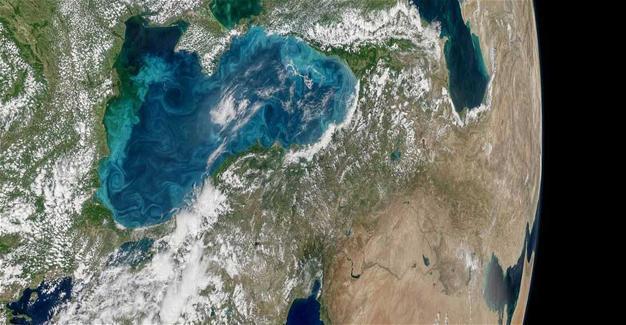Phytoplanktons turn Black Sea, Bosphorus into turquois
ISTANBUL
 A significant part of the Black Sea has turned turquoise due to phytoplankton, a new picture from space shared by NASA showed June 12.
A significant part of the Black Sea has turned turquoise due to phytoplankton, a new picture from space shared by NASA showed June 12.The Moderate Resolution Imaging Spectroradiometer (MODIS) on NASA’s Aqua satellite first captured the phytoplankton bloom in the Black Sea on May 29.
Phytoplankton consists of floating, microscopic organisms that make their own food from sunlight and dissolved nutrients.
Ample water flow from rivers like the Danube and Dnieper carry nutrients to the Black Sea.
In general, phytoplankton can support fish, shellfish and other marine organisms. Large, frequent blooms can lead to eutrophication – the loss of oxygen from water – and end up suffocating marine life.
Coccolithophores are a type of phytoplankton commonly found in the Black Sea. When aggregated in large numbers, their white reflective plates become easily visible from space as bright water.
“The May ramp-up in reflectivity in the Black Sea, with peak brightness in June, seems consistent with results from other years,” said Norman Kuring, an ocean scientist at NASA’s Goddard Space Flight Center.
Although Kuring does not study the region, the bloom this year is one of the brightest to catch his eye since 2012.
Other types of phytoplankton can look much different in satellite imagery. “It’s important to remember that not all phytoplankton blooms make the water brighter,” Kuring said.
















